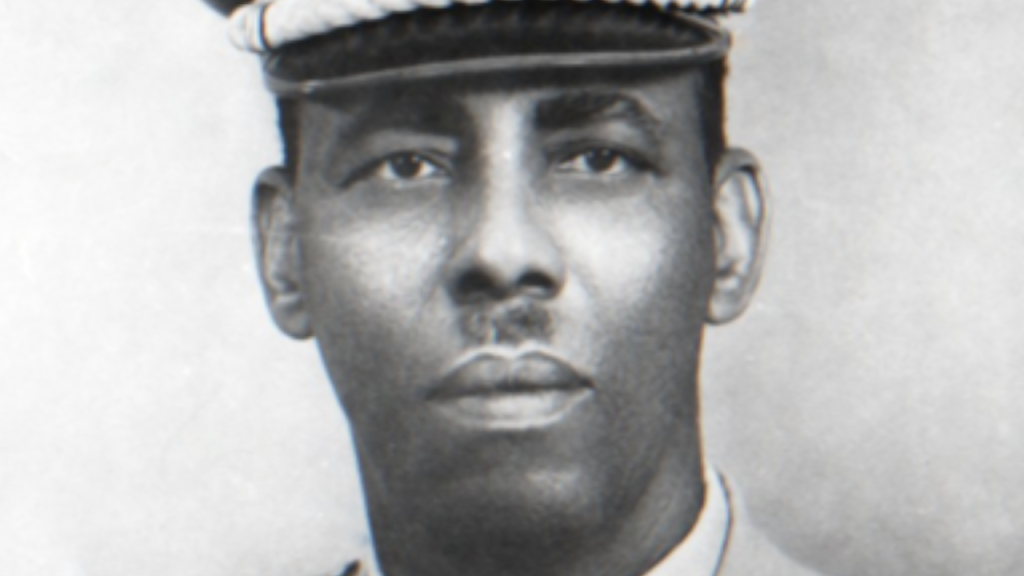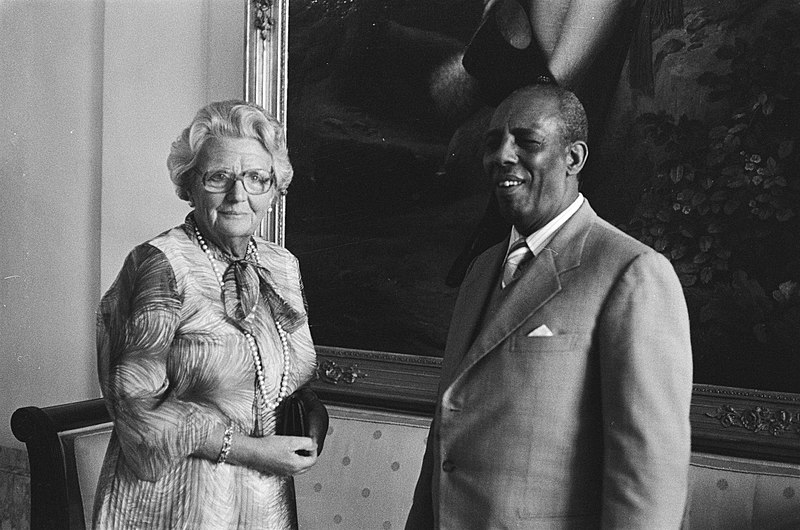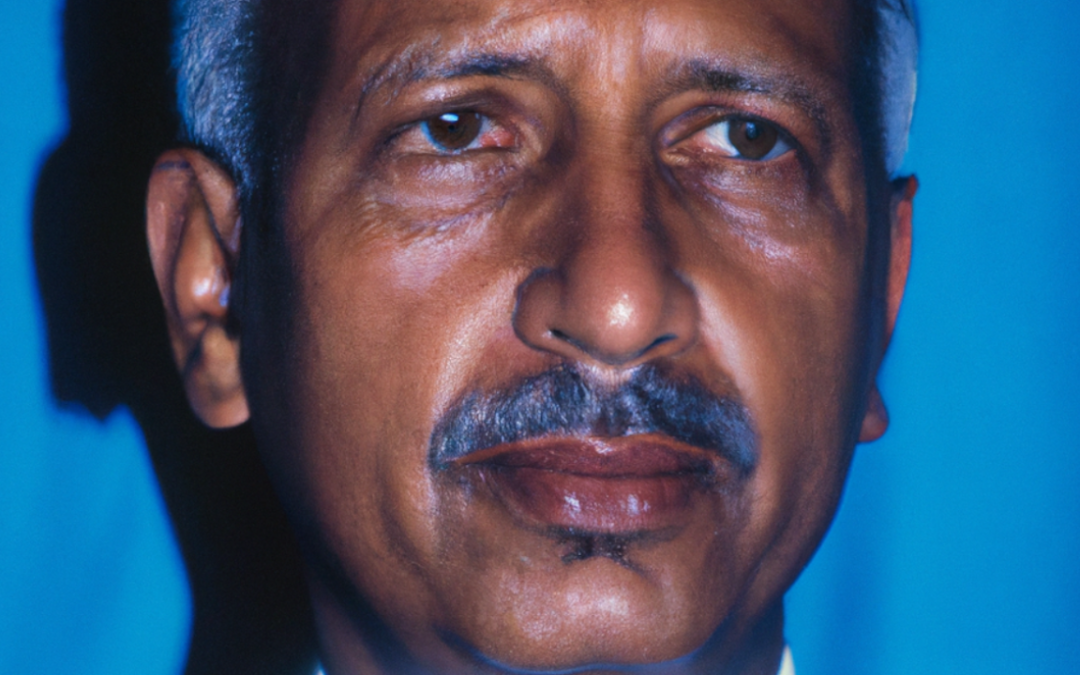Siad Barre is one of the most influential figures of modern history. But there is a good chance you’ve never even heard his name. The truth is that most of us outside of east Africa know very little of Somalia. All we know is it should be avoided at all costs. But it was not always this way.
The Birth of Somalia
In 1960 Somalia appeared to have a bright future. Until that point Somalia had been divided between the British and the Italians. Then with the era of colonialism coming to a close it was decided Italian Somali territory and British Somali territory would merge into one single nation. The new independent nation of Somalia could then forge it’s own destiny – with native leaders elected to rule. Well… that was the plan, anyway. In reality the western political model imposed on Somalia was ill-fitting. It simply did not meet the requirements of this young nation. Add to that poverty, a lack of institutions, and the difficulty of building a country from the ground up and you have a disaster in waiting. The new Somali state would survive just nine years. Part of the problem was that the former colonies were a united nation in name only.
In their actual political workings they were effective two different countries. More often than not one side would veto any effort by the other to make any meaningful political reform. They even had different currencies – along with police forces taxation and entire economies. An outsider may be genuinely mistaken as to whether they were actually in Somalia or not. By 1969 little had been done to resolve the problems within Somali society, and if anything the division had only grown deeper. In October of that year a group of Marxists within the Somali military rolled into the capital of Mogadishu with tanks. Deposing the current government in a bloodless transition, they immediately got to work constructing a new one. At the helm was Siad Barre, a general in the Somalian military.
The Death of Somalia
Siad Barre was born into a world of violence, his parents and brother all dying while he was still young. He himself took to fighting just to survive, and then as a profession, joining the native for in opposing an Italian invasion. In time Barre would climb to the rank of Major General, gaining massive influence both within the armed forces and rural tribal politics. These two strengths fed into each other, and when Somalia gained her independence, Barre was deputy commander of the Somalian army. But this was just the beginning of his arc. Though now a man of a certain age, he had not yet become overtly political. This would change when, in 1960, he trained with representatives of the Soviet military. Under their supervision he was drawn into cold war rabbit hole, coming to see Marxism as an ideal solution for Somalia.
In his view capitalism and western style democracy had failed the Somali people for too long. From then on Siad Barre was an open and committed socialist, advocating it for all of Africa. Given his senior position in the military there were fears he would attempt to use force to achieve his political ambition. But his influence had grown so great the government could not easily purge him from the army. The whole time, however, Barre was patiently waiting for an opportunity to pounce. It came in mid 1969, when the president of Somalia was assassinated. Just the second president of the young country, he was shot dead by his own bodyguard. This shook the political establishment to it’s core and created an atmosphere where no one quite knew what to expect. People wandered how long it would be until the next president would be killed also.

Becoming Leader
Then the day after the president was laid to rest, Barre and his band of Marxist military men rolled into town with their tanks and artillery. Surrounding strategic locations in the capital city, the coup was successful from the moment it began. It would be a year before Siad Barre declared Somalia a socialist state, but from that night he was the man in control. The immediate fallout of the coup was chaotic, as is always the case when military men seize the reigns of power. But since they had all the weapons there were few obstacles that could not be mowed down. All political parties were banned and former power rivals given hefty prison sentences.
Siad Barre was inspired by leaders like Joseph Stalin of the Soviet Union, and Kim Il Sung of North Korea. Like them, he now sought to forge a cult of personality. Portraits of him suddenly appeared across Somalia, and children were taught to worship him as a glorious hero. It would be this way through out his 21 years in power. With help from Soviet advisors Barre began to resettle the population, forcing nomadic tribes to one location indefinitely.
The Great Leader
But unlike most other socialist states, Somalia was very religious. So the official religion remained Islam, with the new government continuing to leverage historic ties to the Arab world. Barre was also an ardent Somali nationalist, desiring to unify all lands with a majority Somali population. Unfortunately this included territory of other nations like Ethiopia. More on that later. Back at home, the new regime set up the kind of co-operative farming communities you see in other communist societies, with similar repercussions. They nationalized almost everything – businesses, land, institutions, and natural resources. This of course discouraged any possible foreign investment and by the mid 1970s Somalia was facing a huge economic crisis. Yet still Siad Barre remained reasonably popular among the masses. Compared to the absolute chaos and lack of certainty they had before, the people were willing to accept dire economic conditions.
Going into the last 1970s, he even grew more popular, as it turned out. With supplies arriving from allied communist powers, Somalia was able to survive. But in 1977 Siad Barre would make a monumental mistake. Swept up in a wave of narcissism and nationalism, he ordered the Somalian military to invade Ethiopia. Aiming to capture the Somali-majority region of Ogaden, they were swiftly able to siege a massive amount of land. After just a month 60% of the region was under Somalian control. Eventually more than 90% would be. The Ethiopian army was simply not prepared for battle and many believed Barre would in short time declare victory. But since Ethiopia was also aligned to the Soviet Union, Moscow cut off all support to Somalia. On the other hand, Soviet and Cuban troops were sent to assist the Ethiopian defense, giving just enough support to prevent Ethiopia from surrendering.
Siad Barre In Power
The war stretched on for almost a year, with a particularly brutal and costly struggle during the winter of 1977. The stakes were high. If Ethiopia loses, almost half of it’s territory would vanish. If Somalia loses, the consequences could arguably be worse. So both side was willing to risk massive casualties in pursuit of victory. Even with outside support it was a miracle Ethiopia was able to push back the superior military might of Somalia. But that is what happened. By the end of March 1978, Ethiopian forces had regained 60% of the region and Somalia was seriously drained of resources. Seeing the end, Somalia pulled out of Ethiopia, conceding defeat.
It’s hard to know how many people died in the war – dictators are famously reluctant to reveal that kind of information. But hundreds of thousands of Somalians were reduced to refugee status. The already dire economic situation of the nation was now worse than ever. Morale too was at an all time low, as was confidence in the government. Immediately a rebellion broke out within Somalia, including high ranking army dissidents among it’s ringleaders. Slowly over the years the rebellion grew, exploding into a full civil war in the 1980s. The conflict only deepened when in 1986 Barre was seriously injured in a car crash.
He would make a full recovery but the incident made people further question his ability to lead. His government responded to the unrest in the worst possible way, becoming more authoritarian and taking harsh military action. In several regions the Somali military took to genocide, rounding up and executing members of minority groups summarily. More than a hundred thousand were killed in the genocide. This of course had the opposite effect to what they’d hoped, undermining what little remained of Somali society.

Fall of Mogadishu
Things got really bad in the year 1990. Rebels were capturing key towns – in fact, they controlled all of them. Siad Barre and his government had control of little more than Somalia’s capital Mogadishu. All could see his prospect of victory was dwindling. With rebels getting closer and closer, members of the government forces were abandoning their post en mass. With the military and political figures withdrawing support, Siad Barre knew he had a choice only between fleeing or dying. He chose the former, leaving his palace and heading to the Kenyan border in a tank. He would not be executed by rebel forces but that was little to console his humiliating defeat, or the suffering of Somalia.
With more than 25 million US dollars worth of loot stolen from the capital, Barre arrived in Kenya hoping to settle in their capital city. But the crimes committed by his regime made it painful for the Kenyan government to grant his asylum. So instead he decided to once again flee, this time to Nigeria, where he would spend the remained of his days. Siad Barre died in 1995. Wealthy and in his mid 80s, Barre was never held responsible for his terrible crimes.
The civil war in Somalia never ended. It continues today, with the Somalian government maintaining control over only some regions of their country. The former British territory of Somaliland has also claimed independence and now operates as a separate country. It has been effectively independent since 1991 but the international community still refuses to recognize it. Somalia now is a haven of warlords and pirates, protected by the culture of corruption and mistrust largely put in place by Siad Barre. Perhaps that is his true legacy – the destruction of the country he claimed to love.

